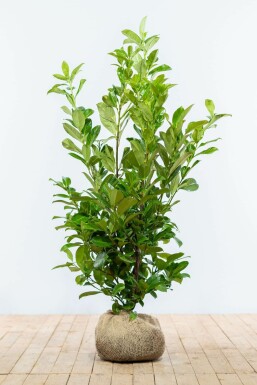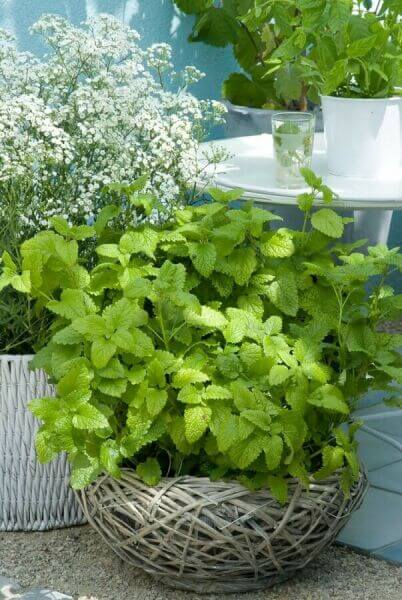Best Hedge Plants For Privacy
Best Hedge Plants For Privacy
Blog Article
Hedge Plants For Natural Barriers
Improve your garden's allure with lush hedge varieties such as Yew (Taxus), Thuja, Laurel, Photinia, and Bamboo, celebrated for their structural integrity and ecological advantages.
Yew and Thuja offer evergreen coverage and winter season durability, while Laurel offers fast growth and broad, aromatic leaves.
Photinia includes seasonal beauty with its vibrant red foliage, and Bamboo provides a low-maintenance, serene ambiance.
These hedges enhance air quality, lower noise, and produce tranquil, private areas.
Proper planting, spacing, and upkeep make sure vigorous growth and eco-friendly consistency.
Explore how these lush varieties can elevate your garden's charm and wellness.
Secret Takeaways
Transform Your Garden With Lush Hedge Varieties
- Select Yew for its dense, evergreen growth and unequaled durability.
- Opt for Laurel for its fast growth and broad leaves, guaranteeing fast personal privacy.
- Pick Photinia for its lively seasonal foliage, which turns a striking dark red.
- Make use of Bamboo for a low-maintenance, winter-hardy hedge with visual appeal.
- Area plants 2-3 per meter and prune regularly for optimal growth and health.
Popular Hedge Plants
When changing a garden with lush hedge ranges, it's important to consider popular hedge plants such as Yew, Thuja, Laurel, and Photinia due to their unique characteristics and benefits.
Yew (Taxus) is highly respected for its durability and thick, green development, making it a prime choice for withstanding landscapes.
Thuja is kept in mind for its evergreen foliage and robust winter season strength.
Photinia includes seasonal vibrancy with red leaves that darken in time, producing dynamic visual appeal.
Laurel provides fast growth and fragrant, broad leaves, perfect for fast personal privacy.
Furthermore, Bamboo is an excellent option for atmosphere, providing a low-maintenance, winter-hardy choice that improves the garden's aesthetic with its elegant, swaying walking canes.
These choices accommodate a variety of horticultural requirements and choices.
Advantages of Garden Hedges
Garden hedges use a multitude of advantages, making them a valuable addition to any landscape. These natural barriers are affordable to implement and supply considerable wind protection, boosting air flow and contributing to sound decrease. The thick foliage of hedges like Thuja and Beech guarantees privacy by blocking visibility, developing a peaceful and secluded environment.
Hedges likewise play an essential function in microclimate policy, providing a steady environment that fosters plant development and minimizes temperature fluctuations. Their detailed leaf structures filter pollutants, enhancing air quality and contributing to a much healthier garden community.
Furthermore, hedges excel in sound decrease, taking in and deflecting acoustic waves to lower ambient noise levels. This double functionality of offering both visual and acoustic privacy boosts the overall harmony and aesthetic appeal of any garden.
Planting and Upkeep Tips
For an effective hedge, meticulous preparation of the planting location is vital. Guarantee the soil has appropriate pH and drain to support strong root development.
Space the plants appropriately for the selected types. Water the hedge frequently during its initial growth phase, changing as required with seasonal changes.
Execute a methodical bug control and disease prevention technique, utilizing chemical or organic treatments when needed. Frequently inspect for aphids, mites, and fungal infections.
Apply mulch to keep moisture and reduce weeds. Seasonal pruning promotes thick development and air circulation, essential for plant health.
Following these guidelines will help you cultivate a vibrant, well-kept hedge that boosts the appeal of your garden.
Spacing and Cutting Standards
Spacing and Cutting Standards
Correct spacing and cutting are vital for cultivating healthy, aesthetically appealing hedges. Appropriate spacing makes sure each plant gets enough nutrients, light, and air flow.
Follow these standards for ideal hedge maintenance:
- Spacing: Position hedge plants 2-3 plants per meter to encourage robust growth.
- Pruning Techniques: Regular pruning is essential for keeping wanted hedge height and shape. Cut brand-new growth in summer and cut back older wood throughout winter season.
- Seasonal Care: Change trimming schedules and techniques according to seasonal requirements to ensure plant health.
- Hedge Height: Frequently screen and trim to maintain the wanted hedge height and accomplish uniform aesthetic appeals.
Complying with these actions will ensure your hedge thrives, boosting both the appeal and performance of your garden.
Selecting the Right Hedge
Choosing the Right Hedge
Picking the suitable hedge involves examining elements such as mature height, foliage density, and ecological durability. Effective hedge plant choice needs comprehending each species' development qualities and site-specific adaptability.
For instance, Yew (Taxus) provides exceptional longevity and dense development, while Thuja is significant for its winter strength. Additionally, thinking about maintenance requirements is vital; fast-growing species like Laurel or Privet need regular cutting, whereas low-maintenance options like Bamboo or Ivy may be more suitable for those looking for minimal maintenance.
Ecological elements such as soil type, light schedule, and moisture conditions must also direct the choice process. This mindful approach guarantees the picked hedges will thrive, offering both practical and visual benefits to the garden landscape.
Delivery and Planting Suggestions
To ensure your hedge plants thrive, they must be provided by specialized couriers and planted quickly upon arrival.
Follow these vital actions for successful planting:
- Soil Preparation: Enrich the soil with raw material to enhance drain and nutrient material.
- Planting Depth: Create a trench twice the width and equal to the depth of the root ball.
- Watering Methods: Water completely after planting, keeping the soil regularly wet but not saturated.
- Mulching: Apply a layer of mulch to keep moisture and reduce weeds.
Client Support and Service
Given the essential function of prompt help in horticultural pursuits, our customer support team is offered 6 days a week through telephone, e-mail, and social networks to offer skilled guidance and quickly attend to any issues. Their commitment to quick action times ensures customer complete satisfaction by fixing questions connected to plant health, optimum planting techniques, and upkeep schedules.

-------------------
Within 24 hours
This detailed support group, enhanced by a stellar 9.3/ 10 customer score, highlights our commitment to improving the gardening experience for each customer.
Regularly Asked Concerns
The Length Of Time Does It Consider Hedge Plants to Develop?
Hedge plants usually need one to 3 years to end up being totally developed, with the specific period differing by types and growing conditions.
Efficient care during this crucial period is important for robust growth. Consistent watering, alert weed control, and proper fertilizer application are essential in promoting strong root advancement.
For instance, fast-growing species like Laurel may establish quicker, while slower-growing ranges such as Yew may take longer. Persistent maintenance speeds up the facility procedure, resulting in healthy and thick hedges.
What Are the Finest Hedge Plants for Personal Privacy?
The question of the best hedge plants for personal privacy includes assessing evergreen and deciduous options.
Evergreen hedges like Thuja, Laurel, and Cypress provide year-round protection, guaranteeing continuous personal privacy.
On the other hand, deciduous hedges such as Beech provide seasonal privacy, shedding leaves in cooler months.
Key maintenance pointers for privacy hedges include routine trimming, fertilizing in spring, and proper spacing-- normally 2 to 3 plants per meter.
Furthermore, consistent watering and thorough weed removal are vital for promoting healthy, dense development.
Can Hedge Plants Draw In Wildlife to My Garden?
Yes, hedge plants can attract wildlife to your garden by supplying important advantages like shelter, food, and nesting sites, therefore boosting local biodiversity. For instance, yew, holly, and laurel are excellent for bring in birds, while ivy supports a range of bugs.
Nevertheless, it is necessary to keep in mind that there are some disadvantages, such as increased maintenance to manage bugs and regular maintenance. Carefully picking and maintaining hedge varieties can assist balance these drawbacks and benefits, ultimately cultivating a dynamic and sustainable ecosystem in your garden.
Exist Any Blooming Hedge Plants Available?
Yes, there are flowering hedge plants available that can improve the appeal of your garden.
For example, Elaeagnus, also understood as Olive Willow, produces aromatic white flowers in the fall, adding a touch of beauty.
Photinia, another popular option, showcases lively red leaves that mature into a rich green, producing a vibrant visual result throughout the seasons.
To make sure these plants thrive, it's vital to practice correct pruning strategies and seasonal upkeep, such as trimming new growth in the summertime and cutting down in the winter season.
These procedures will assist keep the health and aesthetic appeal of your flowering hedges.
How Do I Prevent Pests in My Hedge Plants?
To prevent pests in hedge plants, employ natural pest control methods and preserve appropriate hedge care. Introduce useful bugs like ladybugs, which take advantage of hazardous insects, to produce a balanced community.
Routinely examine your hedges for signs of infestation and quickly eliminate any affected parts to prevent the spread. Ensure the health of your hedges by using well balanced fertilizers and supplying appropriate water.
Use mulching to keep soil moisture and proper spacing to reduce plant tension and promote robust development. These practices collectively help in minimizing bug concerns and preserving a healthy hedge.
Conclusion
In essence, choosing the right hedge ranges website such as Yew, Thuja, and Laurel can transform any garden into a peaceful sanctuary. These plants supply year-round greenery, enhance visual appeal, and offer practical advantages like noise reduction and wind defense.
Appropriate planting techniques, precise spacing, consistent watering, and seasonal cutting are crucial for ideal development.
Trusted shipment services and expert consumer support make sure a smooth experience from purchase to planting, making it simpler than ever to raise your outdoor area.
Garden hedges offer a plethora of benefits, making them an important addition to any landscape. These natural barriers are affordable to carry out and offer significant wind security, enhancing air flow and contributing to noise reduction. The thick foliage of hedges like Thuja and Beech guarantees personal privacy by obstructing exposure, developing a secluded and peaceful environment.

Pruning Techniques: Routine pruning is vital for preserving desired hedge height and shape. Cut brand-new growth in summer season and cut back older wood throughout winter.
Report this page